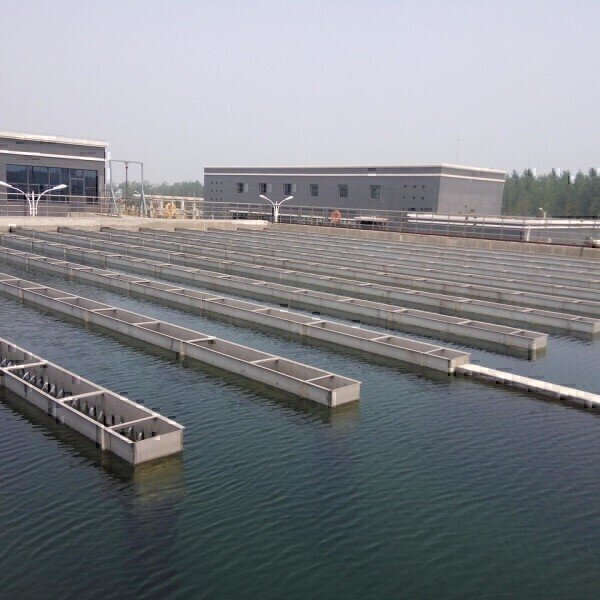The Best Guide To Water Treatment For Well Water
Table of ContentsA Biased View of Water Treatment For Well WaterWater Treatment For Well Water Fundamentals ExplainedThe Best Strategy To Use For Water Treatment For Well WaterThe Water Treatment For Well Water Diaries
In this blog site, we will certainly cover the 4 types of water therapy plants, just how they function and the lots of industrial applications of each kind. Wastewater Therapy Plant (WWTP) Wastewater is the water that originates from water utilized in residential, agricultural, commercial as well as medical or transportation activities.on the various other hand, comes from manufacturing, commercial as well as business activities carried as well as has an entirely different structure than sewage water. Just how does it function? The initial step in this water treatment plant is that the wastewater drains to the plant with the assistance of gravity with the main drain system.
In this phase, the water moves via the gravel chamber to eliminate any type of grit. The water then relocates to the bar displays which get rid of large items.
In this phase, the water flows to the primary settling storage tanks, additionally known as pre-settling basins. These containers have receptacles which are positioned in the base of the tank where water moves via.
The Definitive Guide to Water Treatment For Well Water
These resolving tanks enable the sludge to resolve and afterwards transfers to food digestion storage tanks. In the food digestion storage tanks, the sludge is warmed and also blended. One more essential thing that happens right here is the production of biogas, which the wastewater therapy plants can reuse, in the manufacturing of electrical or thermal energy which is an additional huge advantage to the setting.
This allows the separation of water from the semi-solid sludge, whereas the remaining sludge undertakes the mechanical procedure again for dewatering, that is securing as much water from the sludge as possible. The sludge after that left behind after the digestion and also dewatering procedure is total, is ultimately taken care of in the dump.

The last action in wastewater therapy is inspection. This evaluation includes examining the contamination degree of the water dealt with and also seeing to it it adheres to the highest possible criteria in order to be released or recycled for residential or industrial functions. Applications: Many petroleum refineries or petrochemical along with chemical industries create a big amount of wastewater and call for on-site wastewater therapy plants.
The wastewater below flows via displays as well as into negotiation basins that can secure particles in large quantities. It serves as a pre-treatment as mentioned over as it takes area before three more aggressive phases- primary, additional as well as tertiary treatment. Primary Therapy During this stage, the wastewater relocates into the clarifiers.
The Ultimate Guide To Water Treatment For Well Water
It is the style of these storage tanks that result in settling, that is, the natural strong matter accumulates at the base of the container while the lighter matter floats to the top ending up being easier for removal. The natural issue that settles at the bottom is called a primary sludge blanket.

This RAS goes back into the key clarification tank and also the bacteria in it aids in breaking down any raw material in the sewer. When RAS has entirely undergone both the main and secondary explanation basins constantly, i. e numerous times, it is turned into waste-activated sludge (WAS) (water treatment for well water). The WAS after that does not go back to the primary clarification tank but instead relocates to the protected why not look here containers, also called cardio sludge digesters.
Lastly, the continuing to be sludge relocate to the dewatering center that has dewatering storage tanks where the plant utilizes belt presses to squeeze any kind of staying water out of the sludge. Tertiary Therapy Tertiary treatment adheres to the process of both main and also secondary processes but additionally additionally includes mechanical and photochemical processes.
Unknown Facts About Water Treatment For Well Water
The purpose of this is to remove as much strong physical matters as possible before sending the effluent for further treatment. Here chemicals are included to damage down any type of solid and also chemical waste.
There are 2 sorts of resins- one is an anion one while the other is a cation one. These previous materials release hydroxyl ions which are adversely billed while the cation resins release hydrogen ions that are favorably billed. The cation-exchange resins result in softening of water, the anion-exchange cause the removal of nitrate from wastewater as well as the mix of both the anion and cation exchange gets rid of practically every ionic pollutant present in the feed water with a procedure called deionization.
Applications: Demineralization brings about the full elimination of minerals from the water and is normally utilized in markets that call for water with high degrees of purity, for instance- makeup or feed water in high-pressure boilers, the food and drink industry, and also procedure streams used in the production of electronics. They are likewise made use of in industries for right here the generation of heavy steam, power and cooling (water treatment for well water).
